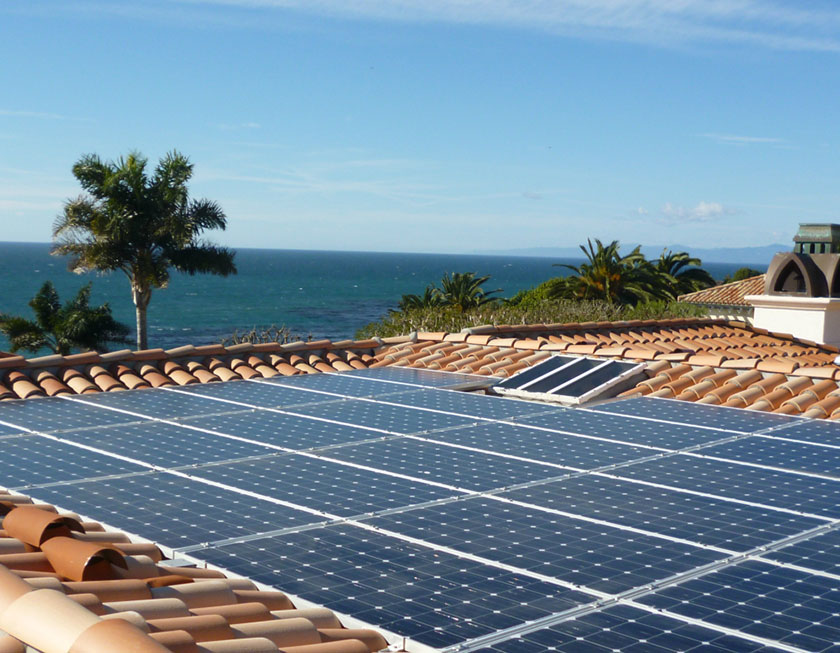3.5 Concentrating solar or solar photovoltaics?

We need an extension to our previous discussion simply because a few pages is not enough to encapsulate the benefits of solar photovoltaics.
So…
Let’s expand our discussion to find out some other unparalleled benefits of solar photovoltaics.
Suits better for the dwindling land area availability: As we understood it in the previous discussion, solar photovoltaics are more space-efficient than concentrated solar power. That means solar photovoltaics generates a greater amount of electricity per unit area than concentrating solar systems. In this case, it is important to realize that the world’s available land area for solar energy harvesting is continuously shrinking due to the increasing demand for land that accelerated by global population growth. One day, space-efficiency would become one of the most critical factors in determining the most suitable solar energy technology pointing more and more attention to solar photovoltaics.
Multi-junction solar photovoltaics technology is the most space-efficient solar energy technology which would probably wipe out the concentrating solar systems in the future. Although this technology is still too expensive for commercial electricity generation, their cost has been falling while their efficiency is gradually being improved. Some believe that multi-junction solar cells with Fresnel lenses would become an economically viable technology in near future. This technology has already archived an incredible efficiency of 46% [1].
Flexibility: Solar photovoltaics can be installed on the ground with or without solar tracking systems. They can also be mounted on a rooftop of a house, factory, or public building where concentrating solar systems cannot be employed at all. Solar photovoltaics are also used as a power source for street lighting.
Building integrated photovoltaics (BIPV) is another new aspect in the renewable energy industry where photovoltaic modules are incorporated into building structures such as windows, facades, roofing tiles, etc. Solar car parking canopy is an ideal example for a successful BIPV application. The goal of BIPV is that they serve as a part of a building structure while generating electricity with no emission. Not only that, BIPV concept allows to access unconventional areas of a building for electricity generation. Some countries have been extensively encouraging their citizen to make use of the BIPV technology by offering additional incentives. For instance, France has introduced a feed-in tariff scheme where BIPV systems are paid up to €0.55/ kWh. Another example is Italy which pays BIPV systems €0.49/ kWh while ground-mounted systems are paid €0.34/ kWh only [2].
Scalability: Concentrating solar systems are based on thermodynamics and rely on a large amount of concentrated solar energy to archive high temperatures. Therefore, they need a large land area to collect a sufficient amount of solar radiation and concentrate. In other words, they are suitable if their capacity exceeds at least several MWs but are not at all feasible in small or residential-scales (to generate a few Kilowatts of power). Solar photovoltaics, on the other hand, fits anywhere concentrating solar does. But it is not the other way around!
Why?
It is due to the fact that solar photovoltaics technology is all scalable. They can be used to power a small calculator, a house (mW to kW) or even a large city (MW to GW).
Unlike concentrating solar, solar photovoltaic technology is a completely scalable and versatile technology!
Environmental impact: Unlike solar photovoltaics, concentrating solar technology uses hundreds of mirrors or reflectors to focus solar energy onto a small region. This creates an extremely hot region in and around the solar receiver making an injurious zone for birds flying across the area.
References
[1] Raza, A., and Ali, J. (2017). A review on carbon nanotubes based organic solar cells. Invertis Journal of Renewable Energy, 7 (4), 187-199.
[2] Celik, A. N., Muneer, T., and Clarke, P. (2009). A review of installed solar photovoltaic and thermal collector capacities in relation to solar potential for the EU-15. Renewable Energy, 34 (3), 849-856.
